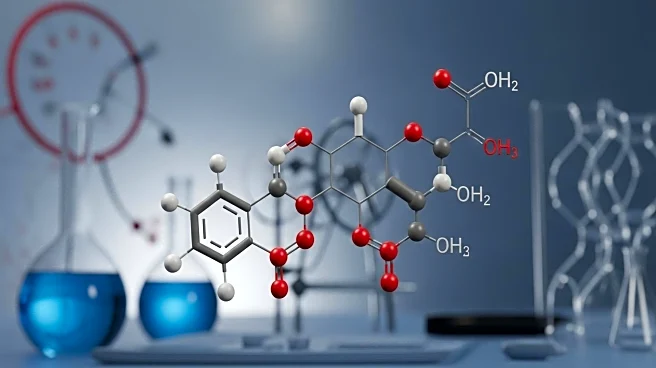What's Happening?
A recent study has discovered a highly selective inhibitor for acetyl-CoA synthetase, a key enzyme in fungal metabolism. The research, published in Nature, highlights the potential of this inhibitor to serve as a new class of antifungal drugs. The study utilized a chemical-genetic screen to identify compounds that inhibit the growth of Cryptococcus neoformans, a pathogenic fungus. The identified compound, isoxazole 1, demonstrated significant antifungal activity by targeting the acetyl-CoA synthetase enzyme, which is essential for fungal growth in nutrient-poor conditions. The study also explored the compound's mechanism of action, revealing its ability to inhibit the enzyme through uncompetitive inhibition, a mode that does not directly compete with the enzyme's substrates.
Why It's Important?
The discovery of isoxazole 1 as a selective inhibitor of acetyl-CoA synthetase represents a significant advancement in antifungal therapy. Current antifungal treatments are limited, and resistance to existing drugs is a growing concern. This new inhibitor offers a promising alternative, potentially expanding the arsenal of antifungal agents available to treat life-threatening fungal infections. The study's findings could lead to the development of more effective treatments for diseases caused by Cryptococcus neoformans and other pathogenic fungi, addressing a critical need in public health.
What's Next?
Further research is needed to optimize the pharmacokinetic properties of isoxazole 1 and its derivatives for clinical use. The study suggests that additional medicinal chemistry efforts could enhance the compound's stability and efficacy in vivo. Clinical trials may be necessary to evaluate the safety and effectiveness of these inhibitors in treating fungal infections. The research community will likely focus on exploring the broader applicability of this inhibitor across different fungal species and its potential synergy with existing antifungal drugs.
Beyond the Headlines
The study's approach to identifying inhibitors through chemical-genetic screening could be applied to other pathogens, potentially leading to breakthroughs in drug discovery beyond antifungal treatments. The findings also underscore the importance of understanding enzyme mechanisms and interactions at a molecular level, which can inform the design of targeted therapies for various diseases.











